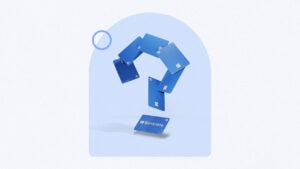Personalization is the key to digital satisfaction for bank, credit card customers

Bank and credit card customers crave personal financial management tools, but few providers have mastered this area, according to new research from J.D. Power. Banks and card issuers rate much higher for basic transactional tools, the firm reports. These include paying bills and depositing checks via mobile devices. More advanced functionality received inconsistent marks from users.
The new frontier, as J.D. Power puts it, refers to elements such as monitoring credit scores, analyzing spending and creating budgets. When users of banking apps take advantage of three or more personal financial management tools, the organization says that overall satisfaction scores surge a whopping 127 points compared to when these items are not offered.
Why personalization matters
“Personal financial management is the next table stakes,” explained Jennifer White, the senior director of banking and payments intelligence at J.D. Power. “Loyalty can be increased if value moves beyond the transaction.”
Financial institutions’ virtual assistants seem to be resonating with consumers. People who use one of these are four times more likely to use personal financial management tools. Examples include “Erica” from Bank of America and “Eno” from Capital One. The Consumer Financial Protection Bureau (CFPB) says that 37 percent of Americans interacted with a bank’s chatbot last year.
Interestingly, while J.D. Power seems to hold a generally favorable view of chatbots and other financial management technology, the CFPB recently published a report warning against this trend. “Chatbots may be useful for resolving basic inquiries, but their effectiveness wanes as problems become more complex,” the watchdog agency asserts. “When chatbots are poorly designed, or when customers are unable to get support, there can be widespread harm and customer trust can be significantly undermined.”
Ultimately, the proof is in the pudding. The CFPB report basically says that some of these artificial intelligence products aren’t all that intelligent. These automated tools can sometimes trap customers in an unhelpful cycle of unwanted prompts — or even worse, provide inaccurate information.
The J.D. Power research found that national banks rated significantly higher for mobile app and online banking satisfaction than regional banks. White noted that the largest banks have all invested considerable time, money and energy into developing personal financial management tools. As a result, large bank customers are more likely to have access to these products and these customers are also more likely to actually use them.
The highest satisfaction goes to…
Bank of America earned the highest national credit card mobile app satisfaction score (706), ahead of American Express (699) and Capital One (696). Bank of America also won the mobile app category among national banks, with Capital One second and Chase third.
In the national online banking category, Capital One set the pace (669), followed by TD Bank (655). Chase and PNC Bank (652) tied for third.
Discover took the crown for online credit card satisfaction. Chase and Capital One were next.
Huntington Bank and KeyBank topped the regional rankings for banking mobile apps and online banking satisfaction, respectively.
While Apple and its financial services partner Goldman Sachs were not included in the J.D. Power rankings, White cited Apple as an additional example of a company that is delivering useful, personalized financial management tools to its customers. She specifically noted the spending analyzer available to Apple Card* customers and the linked savings account with a competitive 4.15 percent annual percentage yield.
Credit card issuers are most likely to offer advice on building a strong credit score and redeeming rewards, White explained, while banking apps and websites focus more on budgeting and spending plans.
Financial security lags
All of this information is sorely needed, as J.D. Power only considers 31 percent of U.S. adults to be financially healthy.
The firm measures financial health by examining consumers’ long- and short-term deposits, insurance coverage and access to credit. By these metrics, 44 percent of the population is deemed financially vulnerable, a figure that White speculated could grow if high inflation and high interest rates persist.
The vulnerable consumer, as J.D. Power defines it, “struggles both with meeting basic needs like paying bills while also not being able to think about future financial stability — leaving them feeling at risk daily.” This jives with a recent Bankrate survey which found that 52 percent of U.S. adults believe money negatively impacts their mental health. That figure rose 10 percentage points over the past year, likely due to the cumulative toll of high inflation and rising interest rates.
J.D. Power says another 14 percent of consumers are “stressed” (doing okay financially right now, but concerned about the future) and 11 percent are “overextended” (closer to the edge than those who are “stressed,” but better off than the “vulnerable” population).
The bottom line
According to White, “What can I do next?” is an important consumer question that banks and credit card issuers should seek to address. We see it in our research as well, ranging from the aforementioned strain that money can place on Americans’ mental health to insufficient emergency savings, long-term credit card debt and more.
A lot of people aren’t particularly confident in their financial knowledge or with the current state of their money matters. Banks and credit card issuers have an opportunity to fill these voids with helpful tools and advice, but as both J.D. Power and the CFPB found, sometimes that help isn’t particularly helpful. The providers that come up with useful solutions have a significant opportunity to differentiate themselves and earn increased market share and enhanced customer loyalty.
Have a question about credit cards? E-mail me at ted.rossman@bankrate.com and I’d be happy to help.
*The information about the Apple Card has been collected independently by Bankrate.com. The card details have not been reviewed or approved by the card issuer.






